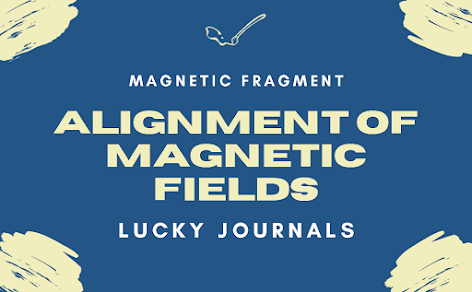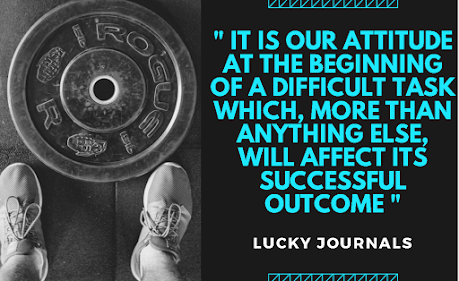- Get link
- X
- Other Apps
- Get link
- X
- Other Apps
Introduction
Hi guys, I am your Lucky Journal and I will guide you through this article. First of all, I apologize for coming late due to some reasons. I hope you will understand. And I am bringing you this amazing article with lots of information and will satisfy your needs.
So today's topic is Working Of Magnets -The Untold Story Of 2021. The title itself justifies that this article will be related to magnets. So buck-up your seat belts and go flying.
Working Of Magnets -The Untold Story Of 2021
If you take a part of the wood and put it close to another piece of wood, nothing occurs. And if you take a segment of rock and put it close to a different rock, nothing happens.
But if you take this part of iron and put it next to this other part of iron, magic! I mean, magnet. Magnetic objects can magically attract long distances because they generate magnetic fields that extend invisibly out beyond the object. It's the attractive property of the magnets that attract the ferromagnetic materials.
On the other hand, the puzzle is this: where do magnetic ranges come from? Ok, it's easy, We've identified this for a long period that electricity and magnetism are just two sides of the same coin, alike of like mass and energy or time and space, and they can be modified between each other.
Magnetic fields are just what electric fields turn into when an electrically-charged object starts moving!
How were the magnets discovered?
Around 4 millennium years ago, a Greek herdsman named Magnes is said to have been herding his sheep in a field of northern Greece called Magnesia.
He suddenly took around and found that the pins of his shoe and the tip of his staff which he used for herding his sheep was stuck fast to the rock he was standing on.
Geo Magnetic Field
This makes judgment for justifying why a current of electrons passing through a wire causes this gyrocompass needle to move, or how currents in the piles of earth generate the geomagnetic field.
On the other hand, a bar magnet itself is a piece of metal without any electrical current passing through them.
At a microscopic level, there are loads of electrons whizzing around in the atoms and molecules that make up any solid. This gives us an outstanding point - The magnetic performance of any everyday object is affected by a captivating combination of effects differing from the level of particles to atoms and collections of atoms.
First, individual particles. Different from the daily functioning of gravity and electricity, permanent magnets can only be fully realised as a quantum mechanical effect.
During the same operation, the electrons and quarks have key properties called mass and electrical charge, major particles also have another inherent property, called a tiny magnet.
Just pretending, it's called an "intrinsic magnetic moment," but really, that is just technical humourous criticism saying that particles with electric load also happen to be tiny magnets. If you want to know why they're tiny magnets, well, you might as well ask why do particles have a load in the primary place, or why do objects with force and momentum pull gravitationally?
Level Of Atoms
No one knows. We just know the true things and that is how the universe works. Exactly, and since the 1920s, we've understood that any electron or proton is a tiny magnet.
This brings us to the level of atoms. An atom is a bunch of positively charged protons with a bunch of negatively charged electrons whizzing around them.
The proton tiny magnets are about 1000 times weaker than the electron ones, so the nucleus of the atom has almost no effect on the magnetism of the atom as a whole.
Orbital Magnetic Fields (Magnetism Of Electrons)
And you might think that numerous electrons are also moving, like the current in a wire, they would produce magnetic fields from that particular motion.
Surely they do, and these are called "orbital" magnetic fields". Except, they don't habitually contribute to the magnetic field of an atom. Here's why: Electrons in atoms are accurately and complicated described by quantum mechanics.
But the gist of the story is that electrons congregate in shells around the nucleus. The electrons filled in any orbit zoom equally in all directions and so the currents they produce cancel out and form no magnetic field.
The same electrons also come in pairs whose tiny magnets drift in opposite ways and also cancel each other. Nevertheless, in a half-filled orbits, all of the electrons are unpaired and their tiny magnets drift in the same direction and sum up, meaning that it's the intrinsic magnetism of the electrons in the outer shell that gives an atom in the bulk of its magnetic field.
Note: If you want to learn about atomic structure and if you want to learn about shells of the atom, then do comment me down, and will bring you the freshest and amazing content on this. Don't Forget
Consequently, particles close to the rear of the major segments of the periodic table, which have completely loaded its outer electron shells, which are not very magnetic.
And fragments not close to the blocks have half-filled outer electron shells, which are magnetic. For example, Nickel, Cobalt, Iron, Manganese, Chromium, etc. Wait, but chromium isn't magnetic!
Alignment of Magnetic Fields
You know why because an atom is magnetic, it doesn't mean that the matter is made up of a specific atom which will be magnetic. This brings us to the level of crystals.
When a bunch of magnetic atoms gets together to make a solid, they generally have two options. Never-the-less the atoms are to align their magnetic fields with each other, or they can align the magnetic fields in a zig-zag route so that they all cancel out.
The particles will do the thing which requires less energy. For instance, chromium which is a very magnetic fragment but an un-magnetic solid. This is because it's one of the most anti-ferromagnetic materials we know till date.Favouring A Domain
On the other hand, Iron is the name cause of ferromagnetism. Unsurprisingly, ferromagnetic or in usual parlance: magnetism. Seldom, the final level of attraction is of fields.
Naturally, in a magnetic element where the magnetic domains of atoms bound collectively, one part of the matter may have all its atoms arranged pointing one way, and chunk will have all its atoms pointing another way, and it continues.
If all of these "Domains" areas of approximately similar size, none may be strong enough to force the others to align with it, and a piece of iron.
However, if you apply a strong enough magnetic field/force/pressure from outside the material, you can help favour one domain/help one domain expand its control over its neighbours, and so on until all of the domains have been unified into one kingdom, all pointing in the same direction.
Final Outcome!
And now, ultimately, you can govern with an iron fist. I mean, magnet. Exactly! Extraordinary is that magnetism is a quantum resource expanded to the size of daily objects.
Every strong holding magnet is a hint that quantum mechanics carry our universe - for anything to be magnetic, it has to have a united kingdom of magnetic fields.
Each is made up of billions of magnetic atoms which also need to be joined with each other. If it has a nearly half-filled outer shell of electrons so their natural magnetic fields can align and not cancel each other out.
Not surprisingly, these criteria are pretty difficult to fulfil, which is why there are only a limited number of suitable materials you can use when you're building a magnet. Derek: OR you could just run a current through an electrical conductor and generate a magnetic field that way.So, I would end this post here and hope that you liked it and got to know Working Of Magnets -The Untold Story Of 2021. I know that this a little big post but I hope it is worth it. Please comment down about this article. Do You Like It?
Also please give me suggestions on topics for future posts. I hope you have a nice day. One more thing, most of you forget to subscribe to my blog, So please do that or else you would miss such interesting content from my side.
Hope you loved this flight And have a wonderful day ahead.
If you want interesting topics and facts about social media, do visit my friend's blog Think MJ
- Get link
- X
- Other Apps
Comments






You would absolutely be Einstein's primogenitor! That is why you have such a great knowledge of science.
ReplyDeleteThank you for visiting this website and for appreciating me. Please subscribe to this website if you want more interesting content and not to miss it. Regards
Delete<3
ReplyDeleteThank You Mr. Poem for visiting this website. Subscribe to this website if you don't want to miss out interesting content
DeleteYou sound like an experienced scientist!
ReplyDeleteWould be better if you try to keep all your photos in single- themed. I appreciate your effort but it irritates your eye to see a classic B&W image and then a very colorful fashionably fonted image! Both are equally great but the real essence is lost when you put them both together. Remember that the theme not only corresponds to the colour, but font- size, font type, background elements and other different things too! You can keep a simple theme for one blog, while a very glamorous for another one and it would still work. Hope you will take this critic review positively.
DeleteHey, what a great blog! Why has not your blog been monetized by google till now? How come google ignored such a great blog. I pray to god that your blog gets monetized as soon as possible because such great content creators must be motivated.
ReplyDeleteThank you Mr. Aditya Sehgal for visiting this website and also for your prayer. Subscribe to this blog if you don't want to miss out some interesting content.
DeleteWould be better if you try to keep all your photos in single- themed. I appreciate your effort but it irritates your eye to see a classic B&W image and then a very colorful fashionably fonted image! Both are equally great but the real essence is lost when you put them both together. Remember that the theme not only corresponds to the colour, but font- size, font type, background elements and other different things too! You can keep a simple theme for one blog, while a very glamorous for another one and it would still work. Hope you will take this critic review positively.
ReplyDeleteThank you Mr. Antriksh Rastogi for visiting this website. I accept your critic review and sure everyone has a different taste. I will look into this matter. Subscribe to this blog if you don't want to miss out some interesting content.
DeleteVery great blog.
ReplyDeleteThank you sir for visiting this website and providing your precious review .Subscribe to this blog if you don't want to miss out some interesting content.
DeleteI am really impressed by your writing style!
ReplyDeleteThank you Mr. Daksh Singh for visiting this website and providing your precious review .Subscribe to this blog if you don't want to miss out some interesting content.
DeleteHow can I contact you? Some Collaborations awaiting ( ͡° ͜ʖ ͡°).
DeleteCheers& Regards!
Thank you sir for visiting. You can contact me by seeing the contact page above where I have given my email id. And I will bring my vision into this matter
Delete